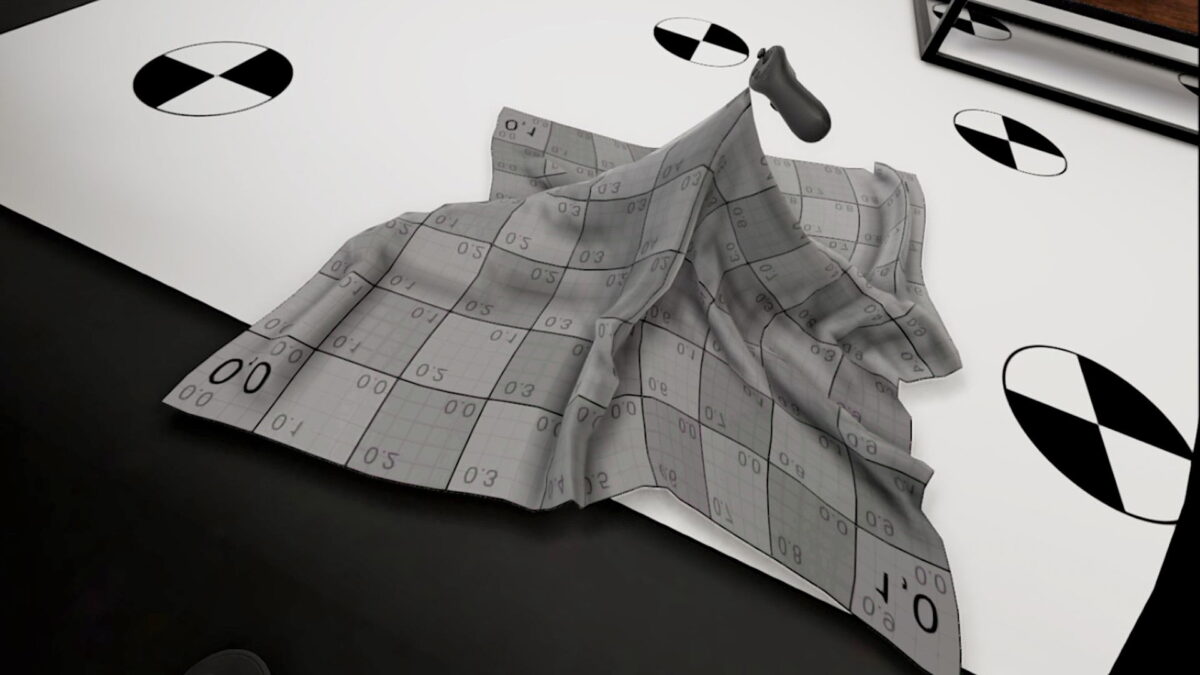Try this incredibly realistic cloth simulator on Meta Quest 2

- Friction improved
- Release in App Lab possible
Update from April 25th, 2023:
Matusson has improved his tech demo and has added more realistic friction.
"Here's a comparison of the new vs old method at the maximum friction (new has more jitter at max value, but old can't achieve anywhere as much friction)," Matusson writes on Twitter.
Matusson tells MIXED that he is considering releasing the simulation in App Lab, which would allow for an easier installation without Sidequest. However, he says that this will not happen until he has improved the demo, particularly friction. "Unfortunately I don't know when that would happen," says Matusson.
I've been making some progress on improving friction for the simulation. Here's a comparison of the new vs old method at the maximum friction
(new has more jitter at max value, but old can't achieve anywhere as much friction)#gamedev #madewithunity #unity3d pic.twitter.com/YjcSV87SVz— Matusson (@Matussson) April 24, 2023
A Unity programmer created a realistic simulation of cloth. The demo is running at 90 FPS on Meta Quest 2.
The Polish programmer who goes by the name of Matusson has been showing off his work on Twitter and other channels for quite some time. This weekend, he released a demo of his cloth simulator for Meta Quest 2 and PC VR headsets.
"The demo is meant to showcase the system and how it can enhance immersion in VR games," the description reads. "It features basic collision detection with primitives, self-collision, procedural thickness, and a huge array of parameters. Performant enough to run natively on Quest 2."
Demo allows precise manual manipulation
VR users can play with two types of cloth: the gray one simulates more standard materials, while the darker, brown one attempts to simulate leather-like materials.
A video shows this impressive technology in action. Users can grab and pull the fabric at any point. Even neat folding is possible. "Pinching with triggers grabs a specific part of the cloth, allowing precise manipulation, while grip buttons will grab a large part surrounding your controllers," the description says.
The simulation runs in Unity and uses the Burst compiler and Job system, two tools that optimize code and improve performance. The demo should run smoothly at 90 frames per second in most cases. The graphics are more demanding on the Quest 2 than the physics simulation, Matusson writes on Twitter.
Despite a high degree of realism, the programmer still sees room for improvement: "This is currently an initial prototype version, so issues are expected. For example, there's only very simplified friction, so cloth objects will slide around. Bending forces aren't stable either, you can expect some moving around."
What are the applications?
Matusson could eventually release the source code. This way, other developers can continue and improve his work or implement it in VR games. "I hope to open-source it once I polish it a bit more. Unfortunately, I can't say when this will happen, I'm very busy with other projects and exams."
I'm releasing the VR demo of my cloth simulation for both PCVR and Quest! You can now play around with the simulator yourself, as long as you have a headset. #gamedev #madewithunity #unity3d #vr pic.twitter.com/sv9XcFClxy
— Matusson (@Matussson) April 15, 2023
Realistic cloth simulation could be used for new VR game mechanics, stunning effects, or more realistic avatars. Meta is also working on cloth simulation for the photorealistic Codec avatars.
You can download Matusson's demo from Itch.io. For installation on Meta Quest 2, Sidequest is recommended.
Note: Links to online stores in articles can be so-called affiliate links. If you buy through this link, MIXED receives a commission from the provider. For you the price does not change.